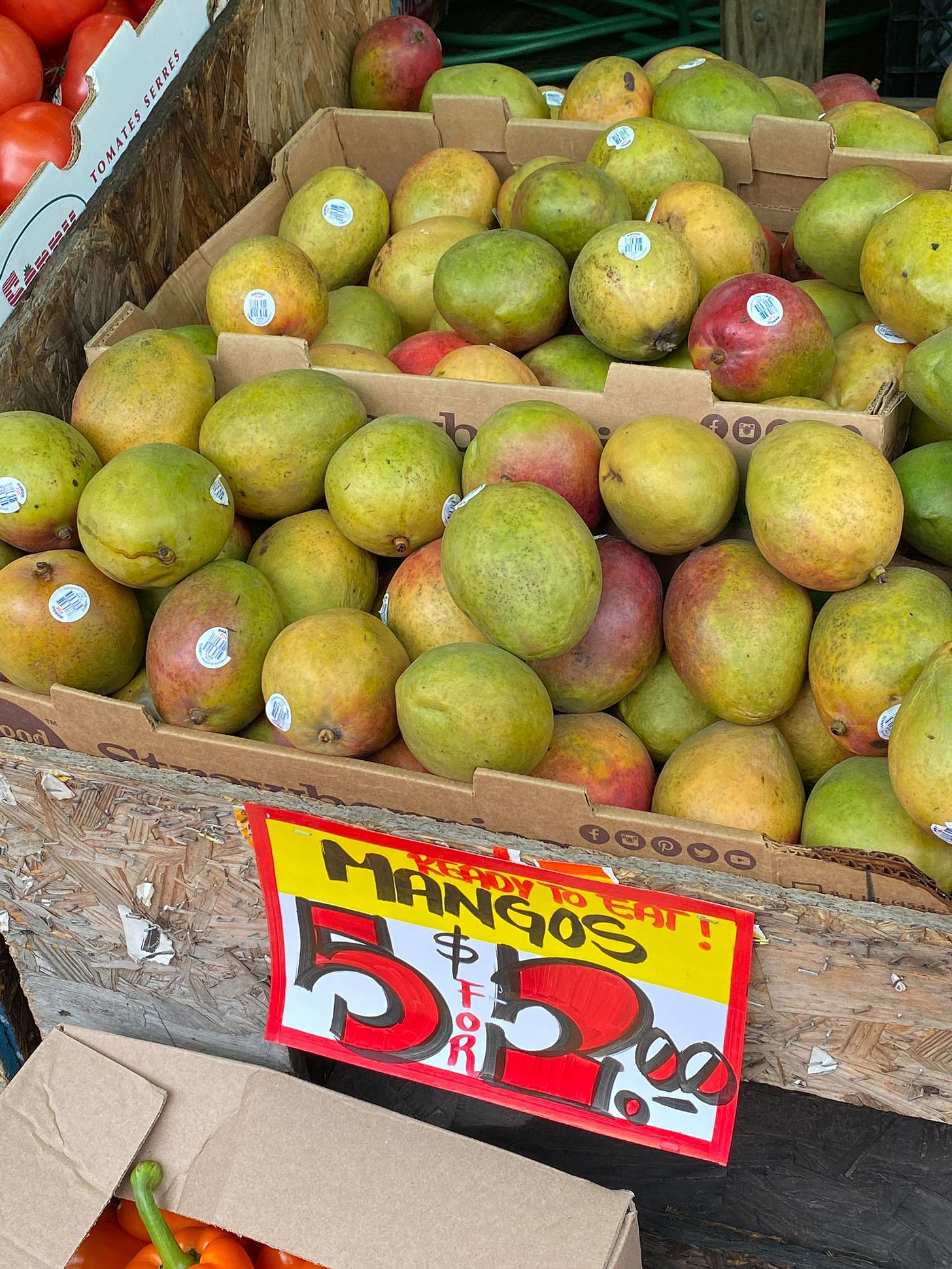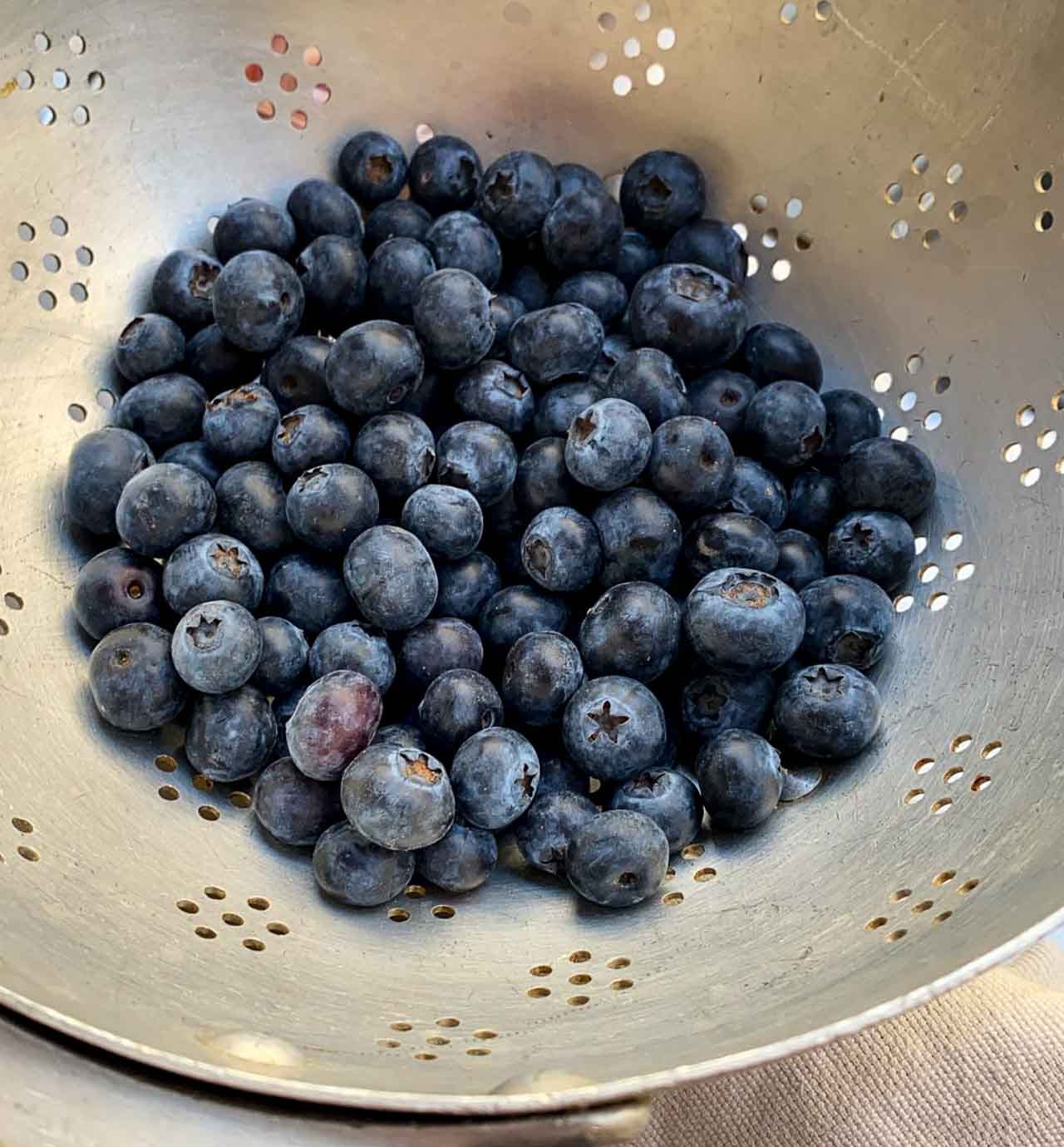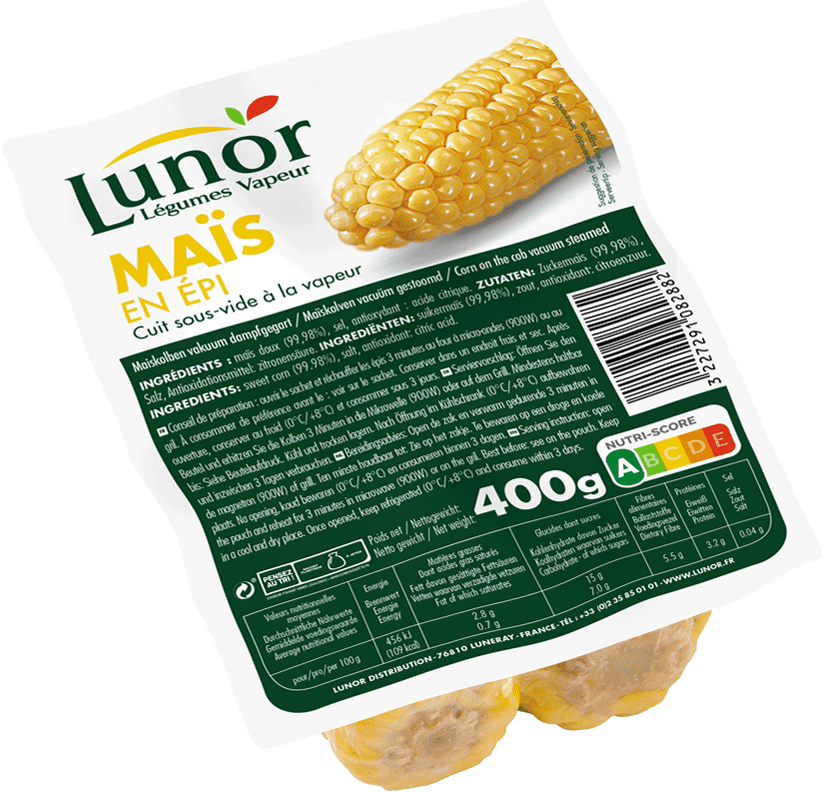Aside from banks that will let you withdraw your money whenever you’d like, drugstores that sell candy, cigarettes, laundry detergent, and alcohol, and no-questions-asked returns (I’ve had clerks in America apologize to me for having to come back to return a pair of trousers I decided I didn’t want!) believe it or not - and most people don’t - there are some things I miss about America, food-wise.
Contrary to popular belief, America isn’t necessarily a culinary wasteland. With farm-to-table restaurants and greenmarkets firmly planted in every state and city, and our rich mixture of immigrants providing a unique and diverse kaleidoscope of foods and ingredients from other cultures, things ain't so bad in the US of A in terms of the food.
Wherever I travel, whether it’s Saigon or Sicily, I going to supermarkets to get a pulse on what is are considered “everyday” foods, which I’ve read is something that famed French pâtissier Pierre Hermé does, too. I don’t know him, but if asked, I’m pretty sure he’d agree with me that Mallomars are some of the best cookies on the planet, whether they’re on sale or not.
(On a sidenote, did you know you can’t bring Mallomars on airplanes? It’s not TSA that has a problem with them unless you consider marshmallows ‘liquids,’ but the urban myth goes that the change in pressure will cause the marshmallows to explode through the whisper-thin chocolate topping, which I’ve never tested because and I don’t want to waste any Mallomars to find out. But maybe I’ll ask Pierre if I ever meet him.) In the meantime here are some foods from America that I look forward to eating when I’m there…
Fresh Tomatoes
One picture, or a video, says it all…
Avocados
My grandmother in Los Angeles had an avocado tree that she eventually cut down because the local raccoons like them as much as she did and would pick them and drop them on the roof of her bedroom, keeping her awake all night. She later told me there were a few things that she regretted in life; one was smoking cigarettes, and another was having that avocado tree removed.
When I was a kid, at the famed (and late) LA restaurant Scandia, the waiters would roll up the salad cart to our table and make a special off-menu salad for our family that had avocado in it. One regret of mine was that I didn’t appreciate the chunks of avocados in them and would pick around the slippery cubes and politely move them to the side of my plate. But nowadays, I eat as many avocadoes as I can. Avocados are plentiful in France at the markets but too often, you cut them open and they’re brown or black inside.
To counter that, the vendors at the markets in Paris will often cut one in half and display it on top of the pile, to let customers know that will be okay inside if they buy one. I’m pretty sure they cut open at least a dozen to get a nice one, which gives shoppers hope they’ll win the avocado lottery at home. In spite of my acumen for finding the best fruit at the market, I’ve been disappointed more than once. In the US, I’ve rarely gotten a bad avocado. Those raccoons at my grandmother’s knew a good thing when they saw (and ate) one.
Mangoes
Romain almost turned in his French passport when he saw all the mangoes in America. He loves mangoes, and so do I.
Mangoes seem to trigger folks to come out of the woodwork to say that mangoes from their country are the best (there’s even an underground connection via What’s App that’s is a pipeline for Pakistani mangoes). I’m not sure why everyone needs to claim that mangoes from their country are the best, since there are so many types and varieties of mangoes, that range from sweet to spicy, you’d have to taste through all. With reportedly over 1000 varieties of mangoes just in India alone, you’d have to taste a lot of mangoes to declare one the best. And we don’t have to choose sides on everything, do we?
Thankfully in America there’s a great selection of them, and sometimes they are bargain-priced, like the ones at the top of this post that were 5 for $2, which is what made Romain question his allegiance. Whether or not you think that the mangoes from your country are the best, it’s hard to deny that the selection and variety (and price) of mangoes in America are hard to beat.
The Baking Aisle
I (too) often have had to wear the crown of cultural ambassador between French and American cuisines. I even got interviewed by Elle magazine in France about it in French. There are good and bad things in both countries but the first place I visit when I go to a supermarket in America is the baking aisle, which is my happy place.
Yes, there’s some crap mixed in here and there, I won’t deny it. (Although I probably could have used a nicer word.) But I love that you find things you don’t find in France, like those familiar boxes Arm & Hammer baking soda, King Arthur flour, tins of baking powder (not the little packets they sell in Europe), non-Nestlés baking chocolate bars (including bean-to-bar brands like Guittard), as well as almond paste, cake flour, and pumpkin puree, with is anathema to DIY types, but for cookbook authors where consistency matters, telling someone to use one 14-ounce can of pumpkin puree standardizes everything.
Carol Field talked about when she went to Italy to research her Classic book, The Italian Baker, and the bakers she met in Italy extolled the quality and strength of American flour. I’ve been known to lug back bags of American flour to France for testing recipes since the all-purpose flour is quite different. (Dorie Greenspan does that too.)
Another bonus is the big tubs of rainbow sprinkles, which I keep saying I’m going to bring back to France to make one of those cakes that everyone makes with rainbow sprinkles, where connoisseurs argue over which rainbow sprinkles work best, but I haven’t yet. But when I do, I’m not going to be so discerning. I’ll just be happy to have the ones I picked up in The Baking Aisle.
Blueberries
My earliest lesson in disappointment - which unfortunately was not my last - was the blueberry bush my father planted for me in our yard. Another disappointment (to others) was when I referred to it as a blueberry “tree” online. People were so upset when pointing out my error that I was worried about being canceled by botanists.
As a kid, I was excited to have fresh blueberries as I watched patiently for the hard, green berries on the tree…I mean bush…to ripen and turn blue. As soon as they did, however, the birds swooped in and pecked away until they were gone. But we didn’t really need to grow our own blueberries in the Northeast as we had plenty from Maine and New Jersey and we’d stop at the produce stands on the side of the road in the summer and pick up ears of corn, tomatoes, and several baskets of blueberries, which we enjoyed with sour cream and a sprinkle of crunchy sugar.
In Paris, if you find blueberries at the market, they’re in plastic clamshell packages with Driscoll or a similar large-scale producer, tagged on the reclosable lid. Worse, there are only about sixteen blueberries lolling around in them. So how excited was I when we were at the market in Olonzac, in the Languedoc a few summers ago, and a man had blueberries he’d picked from his backyard? I wasn’t expecting much but bought two baskets because I was curious, brought them home, and declared them the best blueberries I’d ever tasted. (Unlike mangoes, I feel more comfortable making that pronouncement.) We were excited to go back to the market the following week for more…only to find that the fellow had left for his summer vacances, and wouldn’t be back ‘til the fall. Quelle déception.*
(*Déception means “disappointment” in French.)
The upside is that now, many natural food stores in Paris carry organic blueberries sold in bulk from our neighbors in Spain, so you can buy as many, or as few, as you want and you can bring your own bag, too.
Shishito and Padrón Peppers
Even though we share a border with Spain, interesting peppers are elusive on our side of it. But I guess it makes sense there are no shishitos or padróns in Paris; it’s illegal to fire up the barbeque in the nation’s capital. Yes, I know you can pan-fry them, but I’m trying to come up with a better reason why these little beauties aren’t available around town. And I can’t.
Brisket
Who knew when I started my blog that the number of questions I would get would be about finding beef for brisket in France? And that they would get so persistent that I would do a blog post to explain what cut of meat in the country is closest to brisket? A French chef/friend that lived in America told me about a butcher that sells brisket in France, but you have to buy the entire slab of beef, which is something like 10 kilos, or 22 pounds. And that’s a lot of beef.
As much as I love the cheeses, breads, pastries, oysters, potatoes, garlic, sea salt, wine, and chicken in France, as well as butter, yogurt, duck fat, strawberries, melons, spring onions, fava beans, charcuterie, and of course the regional apéritifs (did I already mention wine?), beef isn’t in the same category. It’s partially because many of the cows were raised for their muscles, to pull carts, or to produce milk, not to eat. Even fellow Francophone Anthony Bourdain wrote about the toughness of French beef.
I won’t mention any names, but I heard about someone who once brought a frozen brisket back in his luggage and it arrived in perfect condition, which he served to his friends with horseradish sauce. I don’t advise doing what he did, but if anyone wants to share 5 kilos of beef, let me know.
Corn on the Cob
While the summer markets in France are bursting with gorgeous apricots, fragrant melons, lush cherries, peaches, brugnons, sweet plums, and rosy nectarines, a familiar whine of Americans lingers in the air: “I wish we could find corn on the cob!” I don’t think there’s anything that says summer for the majority of les américains than corn on le cob.
In French supermarkets, one can find plastic-wrapped packages of pre-cooked corn on the cob which Romain once bought for us. Not that I’ve tasted them all (like mangoes and blueberries) but I have it say, quelle déception…
Interestingly, canned corn is a delicacy in France but the fresh cobs famously never make it past the local pigs, who it’s fed to. And if you’ve ever tried any corn that you swiped from a field, you might feel bad for the pigs. It’s fairly inedible. You can sometimes find fresh corn at markets or in Chinatown or at produce stands, but it doesn’t match the sweet butter & sugar, or other varieties of fresh, sweet corn that’s grown in the US, and is our pride of summer.
And speaking of cryovac, below are the potatoes that are cooked under the roast chickens you see at the butcher shops and outdoor markets in France, which are also sold in cryovac packages for home cooks. (Although it’s odd to me that people would buy precooked potatoes in a country with stellar fresh potatoes, thanks to Monsieur Antoine-Augustin Parmentier.) Perhaps if they put the cryovac’d corn under spit-roasting chickens it’d taste better, too.
Supermarket Sushi
I know there’s a lot wrong with supermarket sushi, but when a friend of mine, an esteemed cookbook author living in Italy who’s posher than I am, posted a picture of her in London with a package of supermarket sushi in front of her, with a comment about her “guilty pleasure,” I caved and stopped feeling bad about an occasional tray of California or spicy salmon rolls.
(I didn’t know this but sushi rolls were invented in the 1980s to keep up with demand for raw fish, and sushi, as more sushi could be made in less time if rolled up with rice and sliced. Although here they say sushi rolls were a way to get Americans used to the idea of eating raw fish, and sushi.) Wherever or however they came to be, I love sushi and always have.
In spite of the glistening seafood at the markets in Paris, and the French love of salmon tartar, at all the Les sushis restaurants that are popular in Paris have exactly the same menu with exactly the same fish. So it’s a guilty pleasure to eat tempura rolls with spicy mayo, grilled eel rolls rolled tightly with avocado and crackly orbs of tobiko outside, and I even like to go vegetarian with umeboshi (pickled plum) and tofu skin rolls. The choices are endless. And when I am here or there (in the U.S.), I am here for them.
Basil
I’d always wondered why it was such a challenge to find big, abundant bunches of fresh basil in Paris, until someone explained to me that Parisians don’t make pesto, or even pistou, pesto's Provencal cousin.
Thyme, parsley, cilantro, bay leaves, and fresh mint are plentiful at the markets (and inexpensive, costing 50¢ to €1 a bunch), as well as dill, but I still haven’t figured out where all that fresh dill at the market is going - there’s only so much salmon with dill a population can eat, which is the only answer I get when I ask French friends what they use dill for.
I think most basil leaves in Paris are destined for Caprese salads, where just a few choice leaves are used, to a few branches of leaves are just fine. For the rest of us, who want to revel in the full-on glory of pesto, whenever I see a bunch of basil in Paris that has more than 4 branches tied together, I buy them all and make pesto.
For some, however, the price seems to be a deterrent. A woman was in front of me in line at a market stand of producteurs, people who grow the produce that they sell, complaining to the vendor/farmer about the price: a whopping €1,50 per bunch. Granted the bunches weren’t very big but when I find nice-looking bunches fresh basil, I don’t quibble over the price. I buy them. I mentioned that said she could extend it in something like basil vinaigrette, but she told me she just likes picking the leaves of basilique and eating them cru, right off the branches. I never heard of people snacking on raw basil leaves, but like Mallomars, brisket, corn on the cob, and les sushis de supermarché, to each his…or her…own.
Related Posts
Food Gifts to Bring French People from America
Ten Insanely Delicious Things You Shouldn’t Miss in Paris
10 Things to Bring Back from Your Trip to Paris
If you got this newsletter, you’re probably already a subscriber. Thanks!
If you’d like to be a paid subscriber and get more stories and recipes, click to sign up at the link below…


















David, really enjoyed this report on “Foods I miss from America”. My wife and I are currently visiting Paris as our son, daughter-in-law and granddaughters live in the 17th. We had a delightful dinner at a wonderful restaurant last night — La Table du Caviste Bio. The proprietor Dominic was marvelous. If you ever have a change please visit him. Also, I agree with your comments about corn - I miss the sweet corn from the fields of Illinois and the wonderful brisket from our home state of Texas. I was thrilled to see your comments about Scandia as I managed Scandia in its final years for Robert Peterson who bought it from Mr. Hansen in the 80’s. Have been reading your blog for the past couple of years and really enjoy it. — Marc Hamilton, New Braunfels TX (now in Paris for another week). And I love to grill the patron peppers as well.
Like you and dill, I wonder what else to do with the mountains of basil flourishing in my US Florida garden. We have a freezer full of pesto. You actually can't get reeeeely good fresh tomatoes in Florida--I've even tried growing them--so caprese is a déception, and I too have taken to just eating the leaves off of the stem. And Florida corn on the cob is bleh. Oh for Ohio, Pennsylvania, or New Jersey corn...
What I find a bit frustrating in our SW France supermarkets is that the baking aisle isn't really a baking aisle. Baking ingredients are spread throughout the store. It's like a scavenger hunt to put together, say, a cherry frangipane tart. Your blog on US-to-France baking ingredients is quite helpful, and I recommend it to everyone spending cooking time in France. A French dictionary doesn't quite do the trick!
Oh... and Triscuits. I so miss Triscuits when we're in France. And my husband misses saltines.